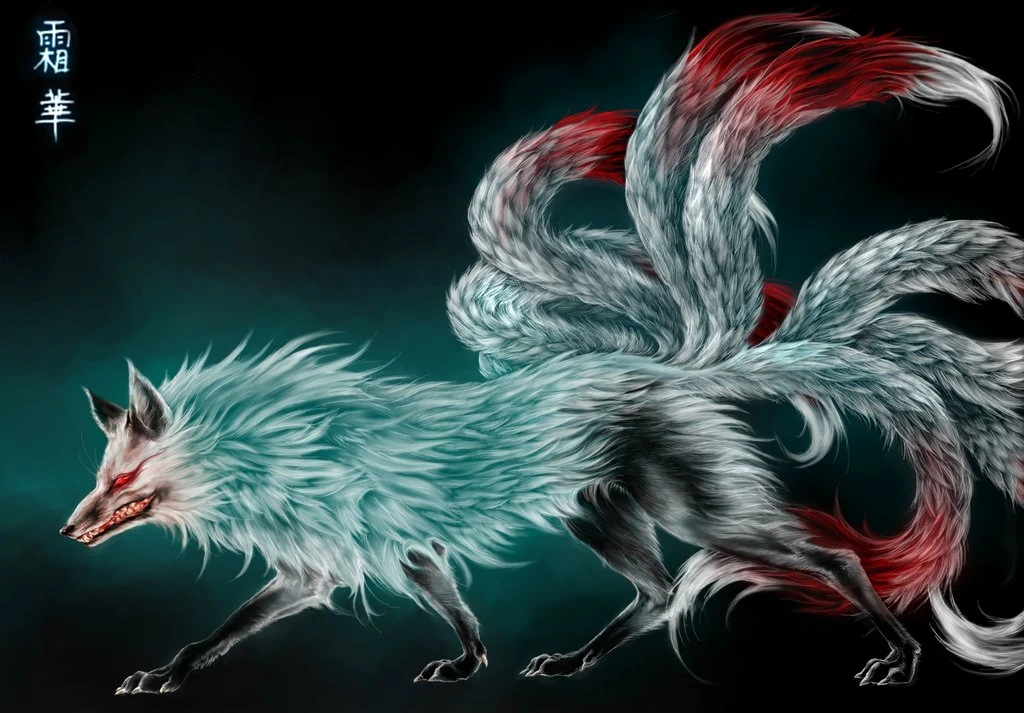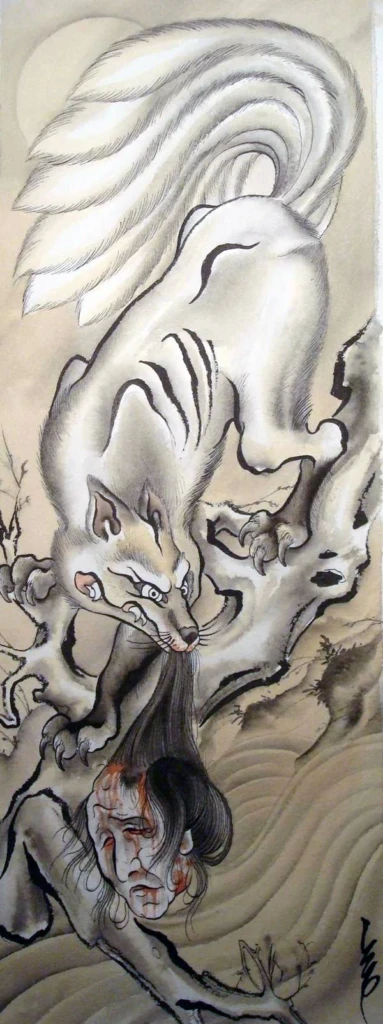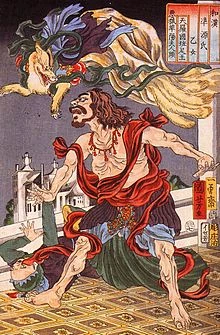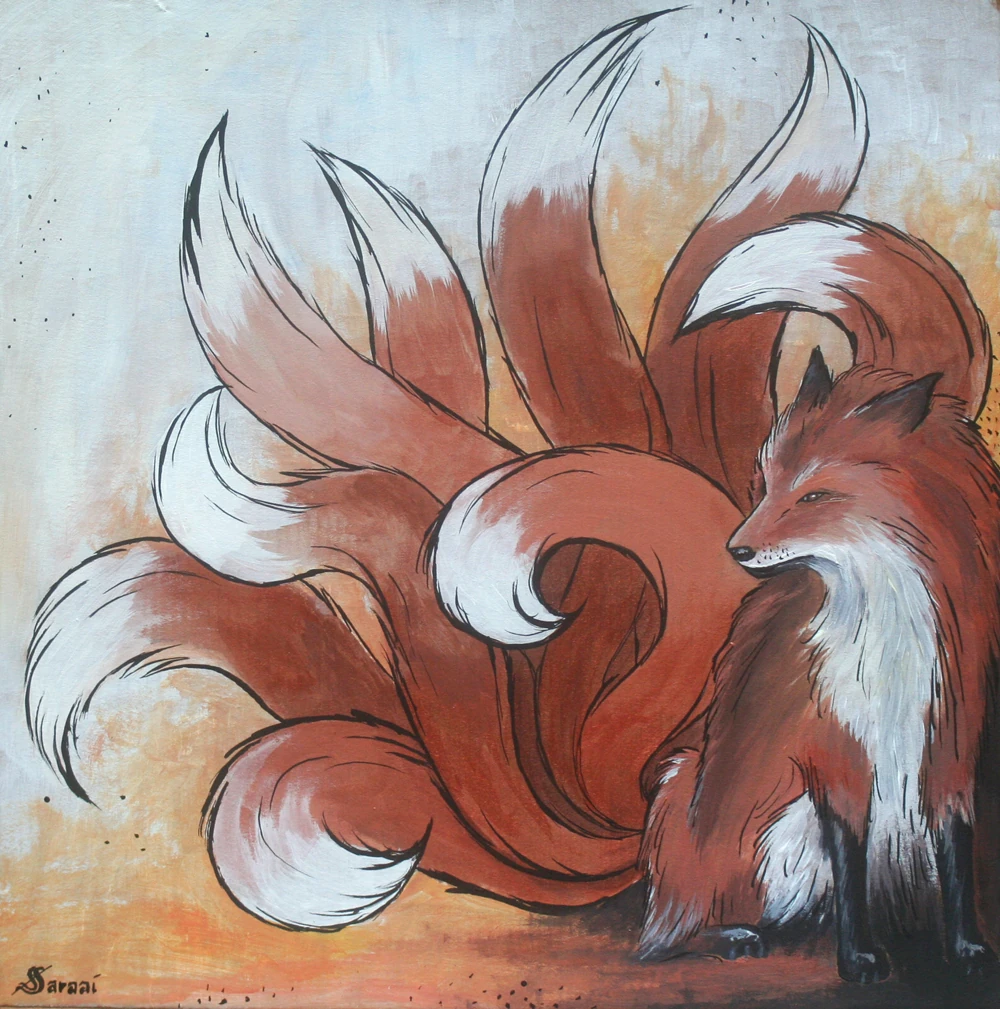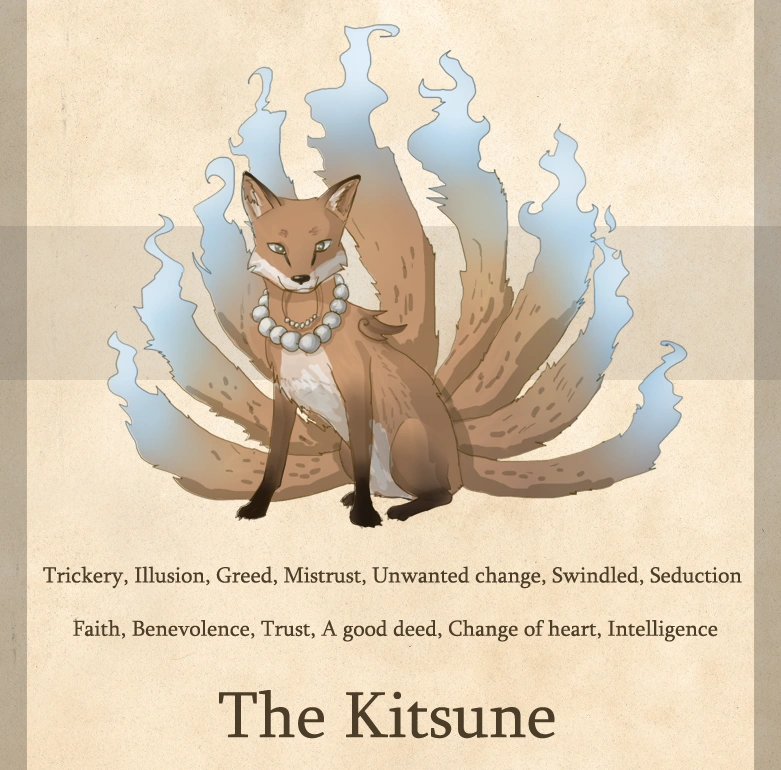In Japanese culture, Kitsune (狐) – meaning “fox” – is not just a wild animal but a supernatural entity with the ability to shapeshift, communicate with humans, and possess extraordinary intelligence. From ancient folklore to religious symbolism, Kitsune plays a crucial role in Shintoism, Japan’s indigenous religion.
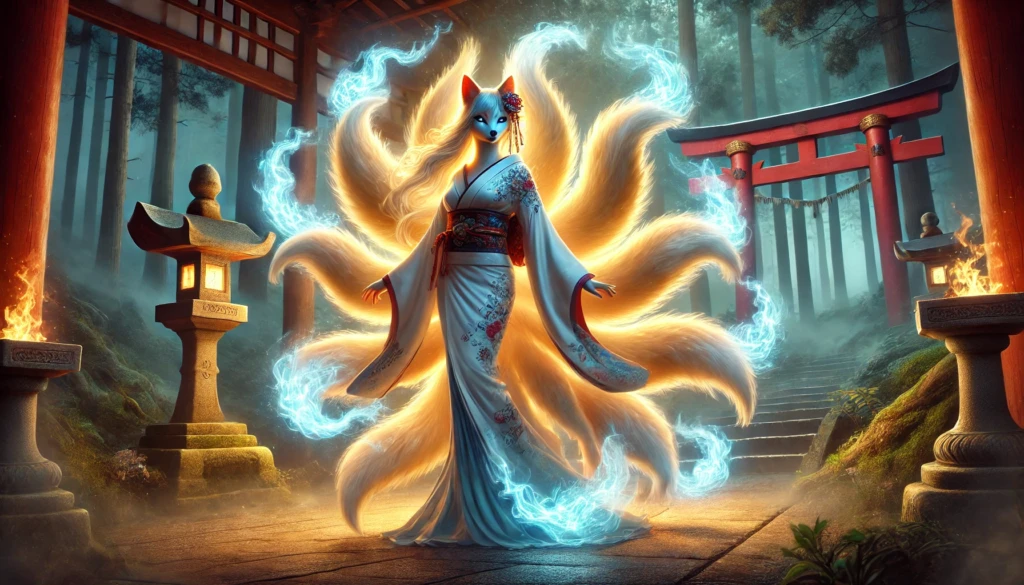
Unlike Huli Jing (狐狸精) in Chinese mythology, which can be either a celestial being or a demon, and Gumiho (구미호) in Korean folklore, often portrayed as a dangerous entity, Kitsune has a more complex nature—it can be both divine and mischievous, both a deity’s messenger and a trickster spirit.
KITSUNE AND SHINTO – THE MESSENGER OF INARI
In Shintoism, Kitsune is regarded as the sacred messenger of Inari (稲荷神), the god of agriculture, rice, and prosperity. This is why fox statues are commonly found at Inari shrines, particularly those featuring white foxes wearing red bibs, holding a key, a scroll, or a jewel in their mouths—symbols of wisdom, power, and protection.
Kitsune that serve Inari are called Zenko (善狐) – “Good foxes”, and they are believed to bring good fortune and safeguard people from harm.
YAKO – THE WILD FOXES
In contrast, folklore also speaks of Yako (野狐) – “Field foxes”, which are independent Kitsune that do not serve Inari. These foxes are known for their mischievous nature, playing tricks on humans or even causing harm by possessing their minds or draining their life force.
Some legends describe kitsunetsuki (狐憑き), or “fox possession,” where a person is believed to be controlled by a Kitsune. In the past, exorcism rituals were performed to “drive out” the fox spirit. Certain families were even thought to have the ability to summon and control Kitsune, leading to fears of supernatural manipulation.
SUPERNATURAL ABILITIES OF KITSUNE
Kitsune possess numerous magical abilities, the most notable being:
- Shapeshifting (変化, henka): Kitsune can transform into human form, often appearing as a beautiful woman or a wise old man. Some legends tell of Kitsune marrying humans and living undetected for years.
- Kitsunebi (狐火 – Fox fire): Kitsune can generate mystical fireballs, used to light their way or to deceive people.
- Mind-reading and spirit possession: Some Kitsune can control dreams, manipulate thoughts, or even take over a person’s body.
- Longevity: Kitsune can live for centuries. As they age and gain power, they grow additional tails.
A Kitsune that attains nine tails (九尾, kyūbi) becomes a Celestial Fox (天狐, Tenko)—a nearly divine entity possessing immense wisdom and supernatural abilities.
HOW KITSUNE DIFFERS FROM HULI JING (CHINA) AND GUMIHO (KOREA)
While all three fox spirits share common origins in East Asian folklore, Kitsune has distinct differences compared to the Chinese Huli Jing and the Korean Gumiho.
| Feature | Kitsune (Japan) | Huli Jing (China) | Gumiho (Korea) |
|---|---|---|---|
| Nature | Can be benevolent (Zenko) or mischievous (Yako), but usually does not harm humans for life force. | Can be a celestial being or a demon; some are revered as deities. | Often depicted as a dangerous entity that consumes human hearts or livers but sometimes longs to become human. |
| Religious Connection | Strongly tied to Shintoism, especially as the messenger of Inari. | Influenced by Taoism; some Huli Jing cultivate immortality. | Primarily exists in folklore, with fewer religious associations. |
| Abilities | Shapeshifting, controlling fox fire, reading minds, possessing humans. | Shapeshifting, seduction, some can ascend to immortality. | Immortality, powerful claws, dream manipulation. |
| Symbolism | A mystical, intelligent spirit that can be loyal or tricky. | A symbol of seduction and power. | A tragic figure caught between good and evil. |
KITSUNE IN MODERN CULTURE
Today, Kitsune frequently appears in Japanese anime, manga, and films. Some famous examples include:
- “Naruto” – The protagonist, Naruto Uzumaki, carries the Nine-Tailed Fox (九尾の狐, Kyūbi no Kitsune) within him, an immensely powerful creature.
- “The Shape of Voice” (Koe no Katachi) – Uses the Kitsune motif as a metaphor for isolation and communication.
- “Pom Poko” (Studio Ghibli) – Features Kitsune as part of Japan’s folklore creatures.
Additionally, Inari shrines remain popular destinations, especially Fushimi Inari Taisha in Kyoto, where thousands of red torii gates and fox statues create an ethereal, mystical atmosphere.
KITSUNE, A TIMELESS LEGEND
Kitsune is more than just a mythical creature—it is a cultural symbol of wisdom, power, and mystery that has endured for centuries. As the messenger of Inari, Kitsune represents both divine guidance and mischievous cunning.
Whether as Zenko – the benevolent fox or Yako – the wild trickster, Kitsune continues to captivate the imagination of generations. And if you ever wander through a dark forest at night and see a pair of glowing eyes watching you—could it be a Kitsune lurking in the shadows?
Nine-tailed fox Kitsune in Japanese cultural records
